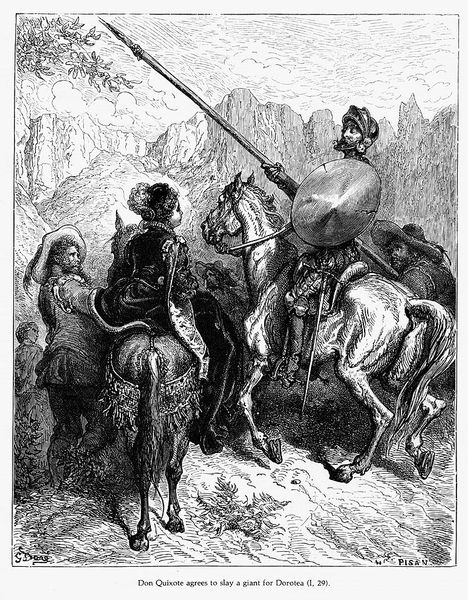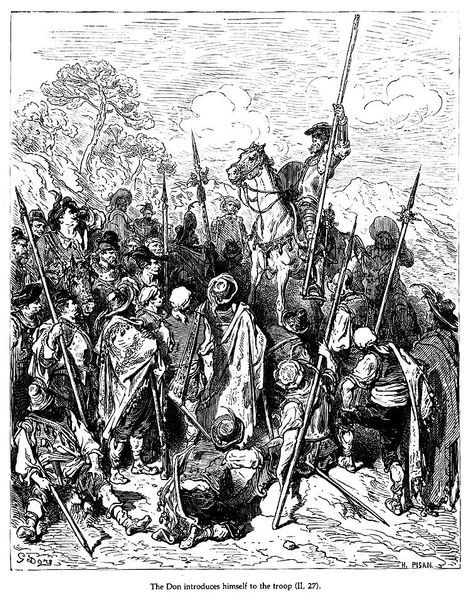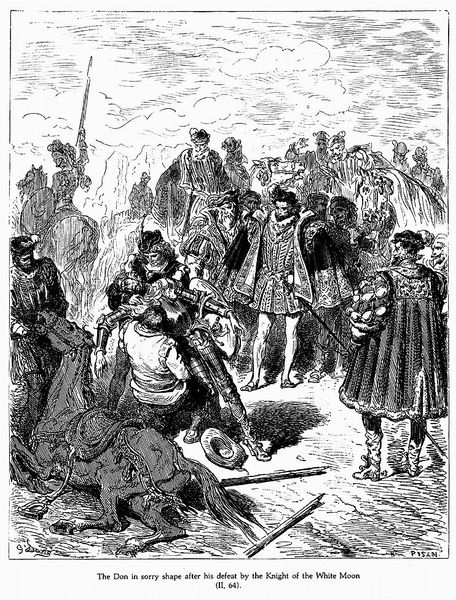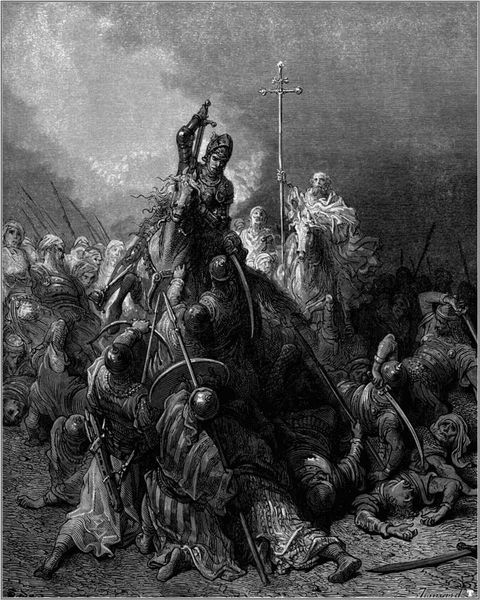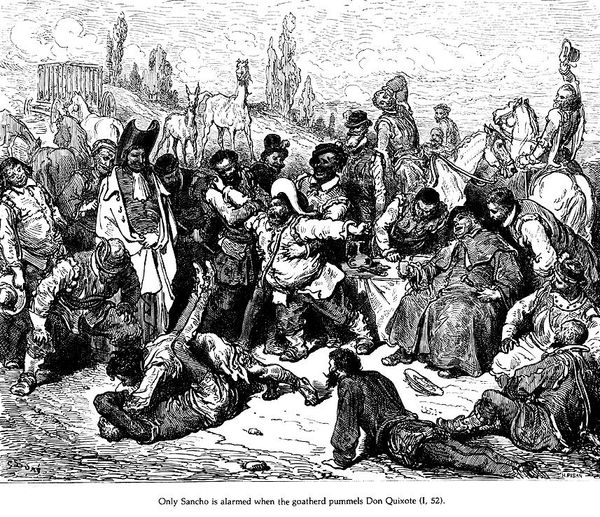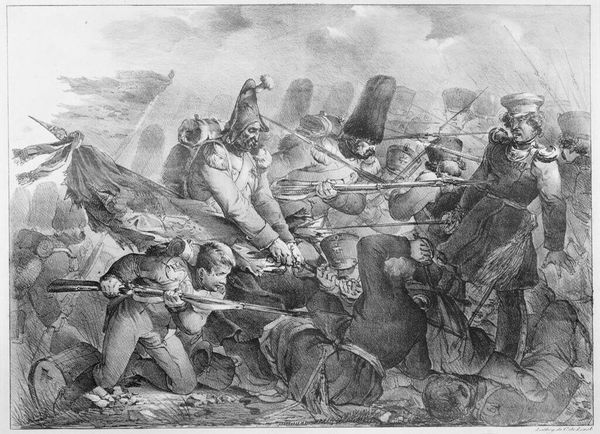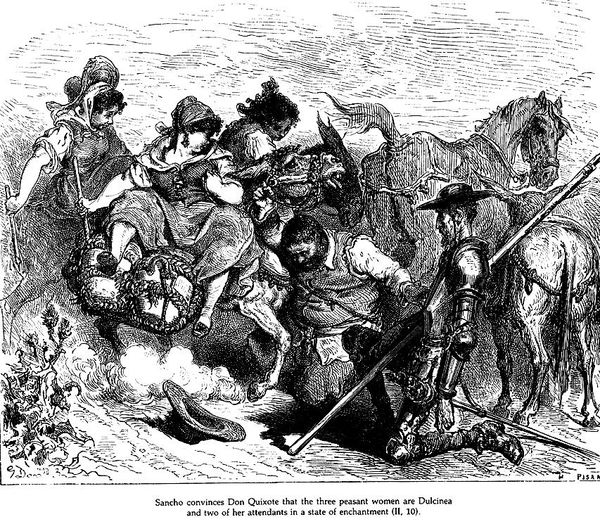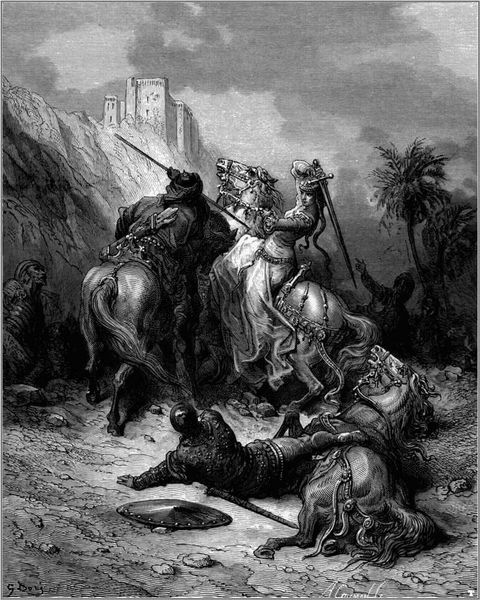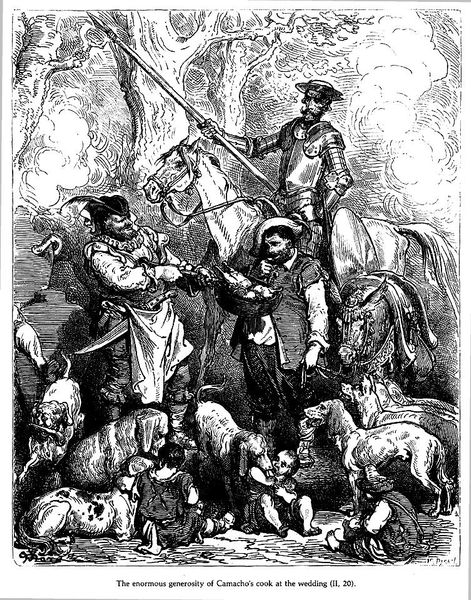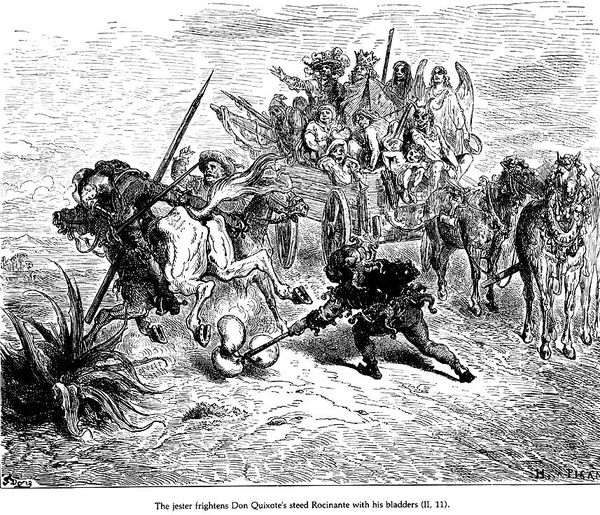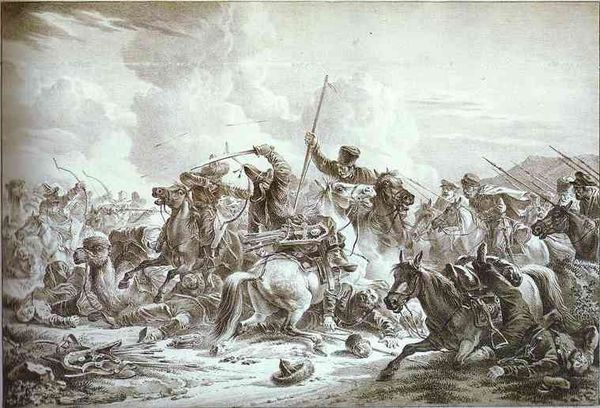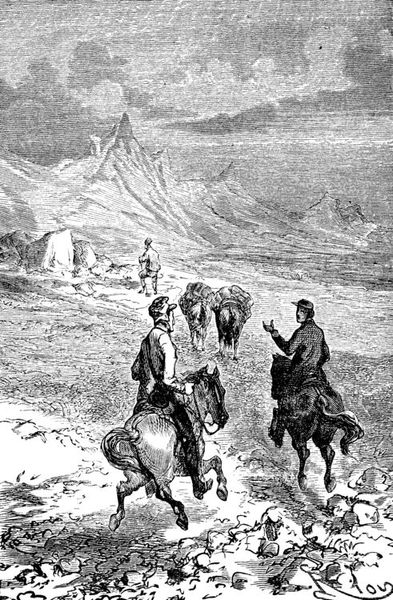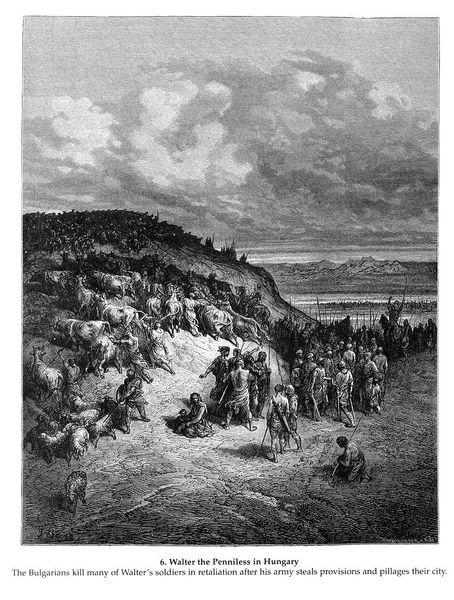
drawing, paper, ink, engraving
#
drawing
#
narrative-art
#
animal
#
landscape
#
figuration
#
paper
#
ink
#
romanticism
#
horse
#
line
#
history-painting
#
engraving
#
realism
Copyright: Public domain
Curator: This drawing presents Gustave Doré's "Don Quixote." We are drawn into a pivotal scene rendered in ink on paper. Editor: What strikes me first is the dynamism! The energetic line work gives everything a sense of movement and depth, from the foreground foliage to the distant figures. The dramatic chiaroscuro heightens the emotion. Curator: Absolutely, Doré's engagement with Romanticism certainly plays out here. It’s interesting how he visualizes the complex social dynamics from Cervantes's novel through a distinctly nineteenth-century lens. Note how he amplifies the role of the "common" man alongside the romanticised knight-errant, imbuing the commoners with almost caricatured qualities. Editor: I am noticing his handling of light and shadow which adds another layer of interest to the composition. The contrast focuses our attention on Quixote as he interacts with the criminals; it also seems to enhance the characters themselves through high contrast rather than detailed rendering of tone and texture. Curator: That is a keen observation! And indeed, the contrasts are rife here: chivalry and criminality, delusion and reality, freedom and captivity... This work resonates with those polarities prevalent in the period following the French Revolution, specifically around social reform. We see Doré participating in the debate regarding man's nature, inherent innocence or depravity through his interpretation of Quixote's interventions in the penal system of Spain at the time. Editor: Looking at this, the interplay between the foreground action and background crowd really demonstrates the narrative at hand. Doré manages to give weight and expression to these forms using surprisingly little tone or texture; everything communicates! Curator: Yes, Doré clearly uses the romanticized medieval tropes of chivalry in a period beset with social unrest in the late 1800's, creating what the modern viewer might read as 'critical commentary.' Editor: It has certainly shifted my perspective regarding not just Don Quixote, but regarding visual storytelling and dramatic effect through pure mark-making; there is beauty even within its depictions of supposed ugliness.
Comments
No comments
Be the first to comment and join the conversation on the ultimate creative platform.
